Publié le novembre 12 2024
Auteur de l'étude :
Denise Tropea, DPM.
Spécialiste en soins des plaies, Las Vegas, Nevada – États-Unis
Patient:
Homme caucasien âgé de 64 ans.
Histoire:
Diabétique depuis 22 ans avec une neuropathie sensorielle. Le patient est actuellement diabétique de type 2 insulinodépendant, qui est mal contrôlé. Le patient s'est présenté au cabinet le 9 janvier 2018 avec un ulcère sur la pointe de son gros orteil droit. Le patient était en vacances pour rendre visite à sa famille et a développé une ampoule dans cette zone. Il a consulté un médecin et a reçu des antibiotiques à ce moment-là.
Présentation de la plaie :
Ulcération de 2 cm x 1,5 cm sur la face distale médiale du gros orteil droit. Elle présente une base granuleuse rouge avec cellulite au niveau de l'articulation du gros orteil.
Traitement antérieur :
Antibiotiques oraux Keflex et pommade antibiotique topique Neosporin.
Méthodologie de l'étude :
Application de Lavior D-Care une fois par jour avec un pansement (bandage).
Produit(s) utilisé(s) dans l'étude :
Gel de soin des plaies diabétiques LAVIOR D-Care.
Durée de l'étude :
2 mois et demi.
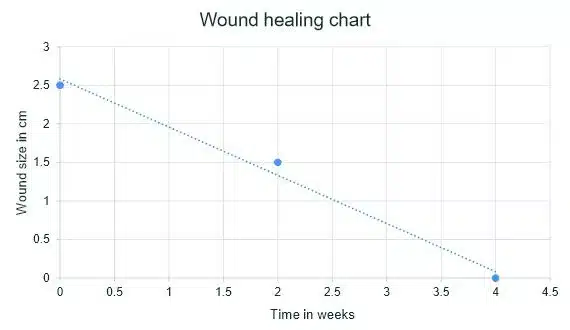
Récit de traitement
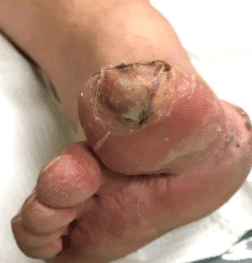
PRÉSENTATION INITIALE
Présentation initiale de la plaie avec cellulite du gros orteil droit. Base granuleuse rouge avec drainage séreux. Taille de la plaie : 2×1,5 cm.
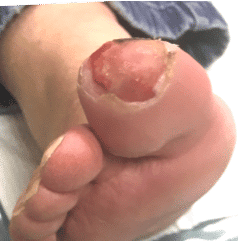
2 SEMAINES DE TRAITEMENT
La cellulite a diminué et la plaie a rétréci. Il y a une escarre sèche autour de la plaie. Taille de la plaie : 1,5 × 1 cm.
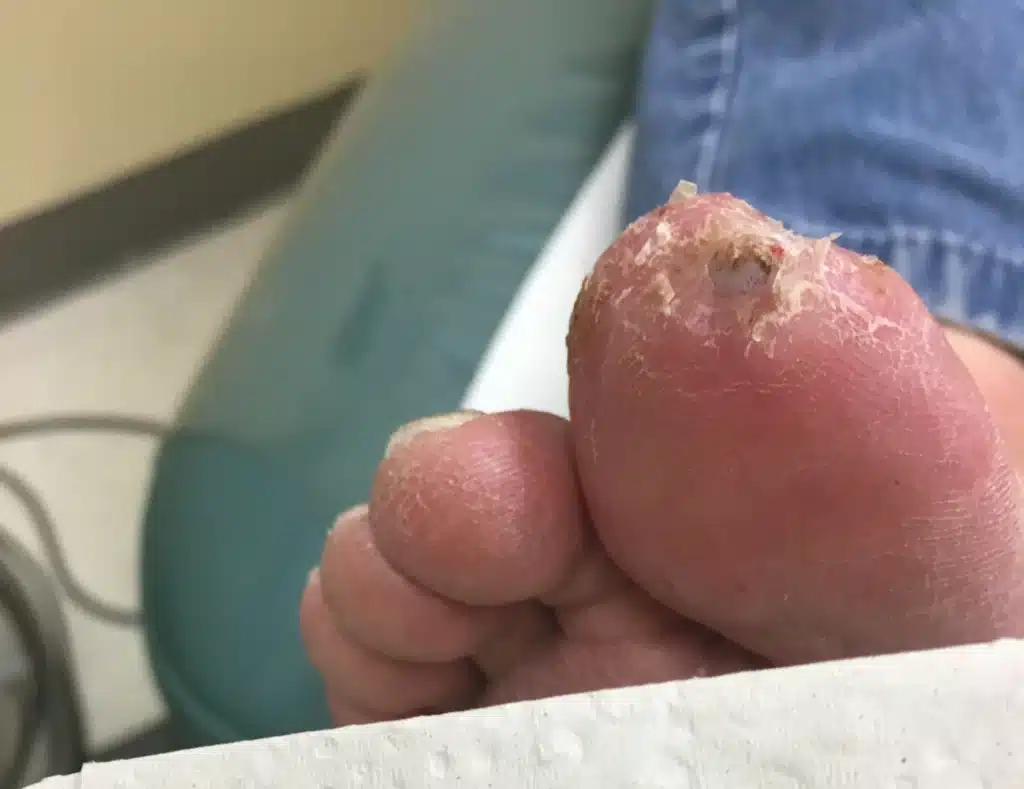
4 SEMAINES DE TRAITEMENT
Quatre semaines après la consultation initiale, la cellulite a disparu et la plaie continue de se rétracter. Il n'y a pas d'odeur ni de drainage et elle continue de s'améliorer. Taille de la plaie : 1 × 1 cm.
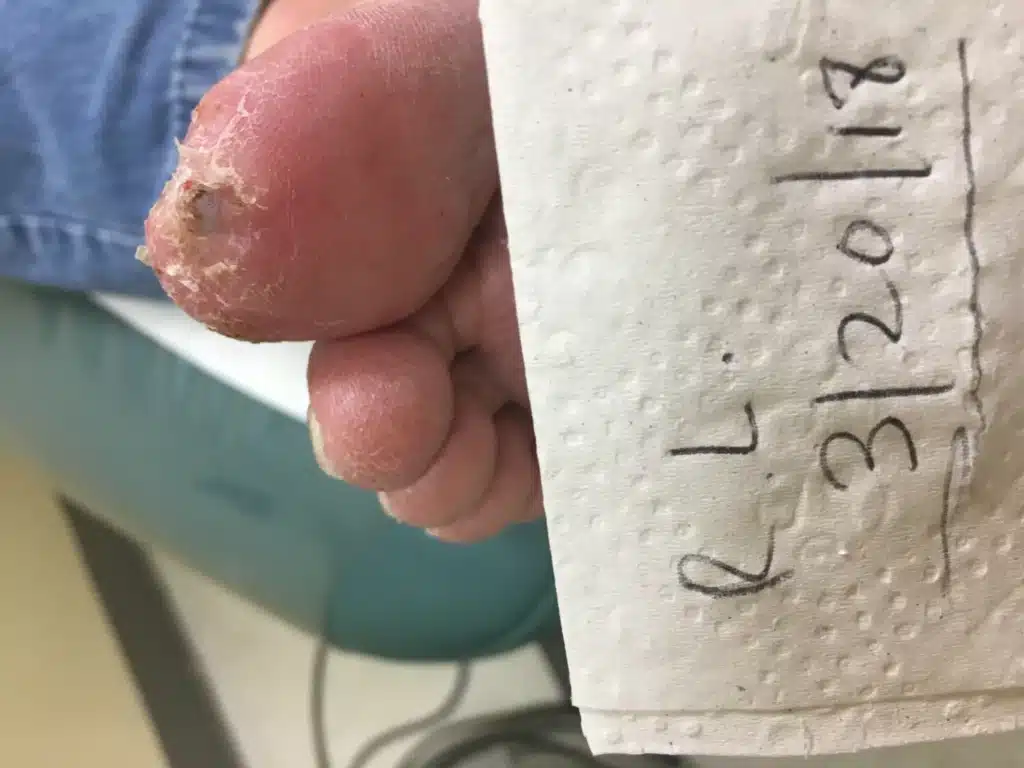
6 SEMAINES DE TRAITEMENT
Le patient revient au cabinet 6 semaines après la consultation initiale et la plaie s'est nettement améliorée. Il n'y a pas de drainage et une petite escarre est notée. Il n'y a aucun signe visible d'infection. Taille de la plaie : petite escarre.
RÉSUMÉ DES RÉSULTATS
Le cas ci-dessus démontre le pouvoir de guérison du produit D-Care Wound. Ce patient est bien connu de notre cabinet et a déjà eu des plaies. Elles sont lentes à cicatriser en raison de son diabète et de sa neuropathie de longue date. Une fois la plaie traitée avec D-Care, nous avons constaté la progression de la cicatrisation et la fermeture définitive de la plaie.